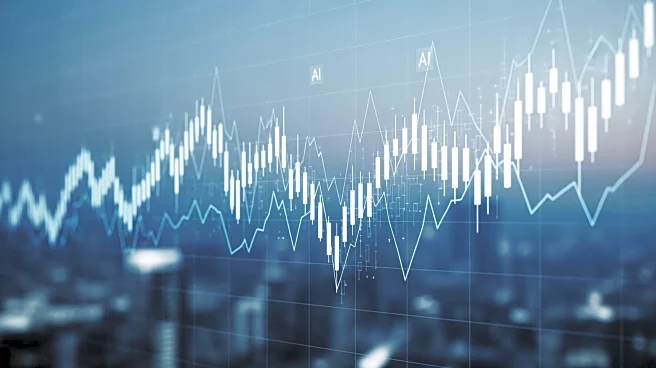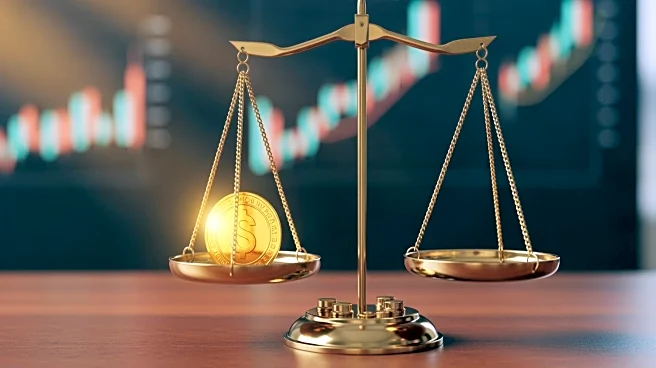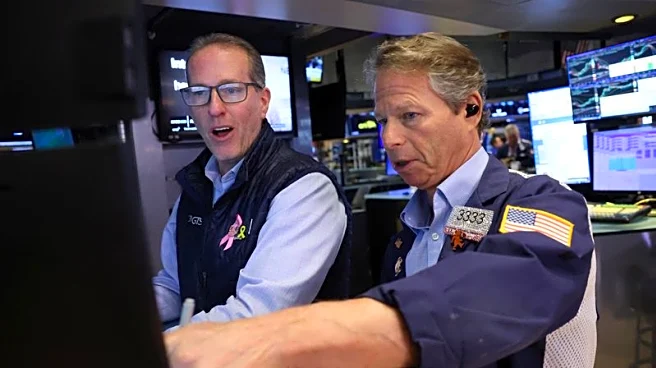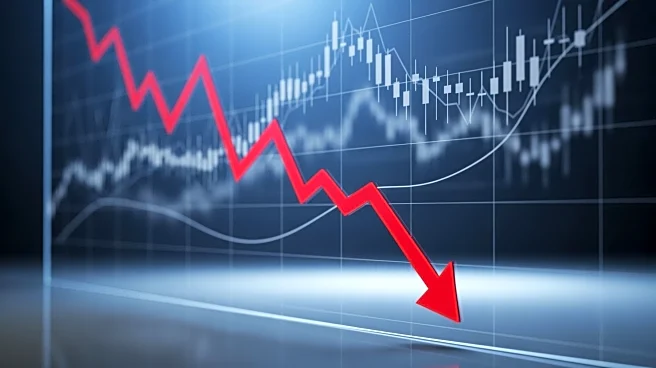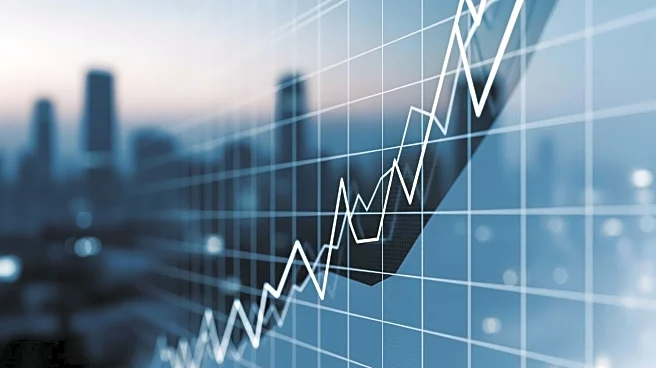What's Happening?
Recent comments from U.S. Federal Reserve officials have led investors to reassess the likelihood of a rate cut in December. As of Monday, markets are pricing in a 56.1% chance that the Fed will maintain
current rates at its next meeting, a significant shift from the 95% probability of a rate cut predicted a month ago. This change in expectations follows a turbulent week for European markets, with concerns about an artificial intelligence bubble and global economic stability affecting investor confidence. The pan-European Stoxx 600 showed slight gains, with notable increases in shares of Saab and Airbus due to recent deals.
Why It's Important?
The Federal Reserve's rate decisions have a profound impact on global financial markets, influencing borrowing costs, investment strategies, and economic growth. The recalibration of rate cut expectations reflects broader concerns about economic stability and the sustainability of the artificial intelligence trade. The shift in market sentiment underscores the interconnectedness of global economies and the influence of U.S. monetary policy on international markets. Investors are closely monitoring the Fed's actions, as they could affect economic recovery and growth prospects.
What's Next?
The Federal Reserve's upcoming meeting will be closely watched by investors and economic stakeholders, as the decision on interest rates could have significant implications for market dynamics and economic forecasts. The recalibration of rate cut expectations may lead to increased market volatility and adjustments in investment strategies. Stakeholders will be assessing the Fed's commentary and economic indicators to gauge future monetary policy directions.
Beyond the Headlines
The evolving expectations for Federal Reserve rate decisions highlight the complexities of managing economic recovery in a post-pandemic world. The interplay between technological advancements, such as artificial intelligence, and traditional economic indicators presents new challenges for policymakers. The global economic landscape is shifting, with emerging markets and technological innovations influencing traditional economic models.


